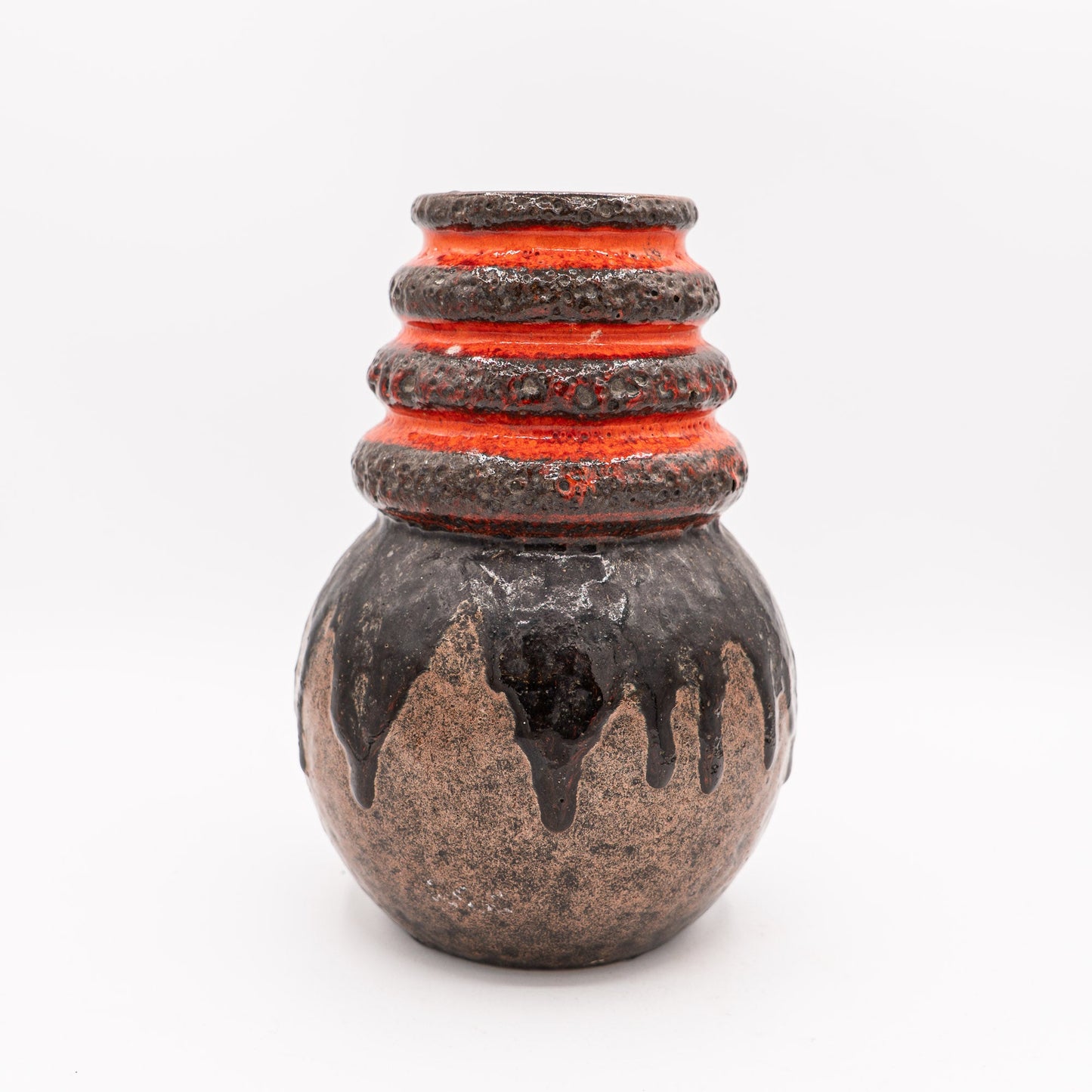Scheurich
Orange Band & Black Lava Drip - Scheurich 269-22 - West Germany, 1970s
Orange Band & Black Lava Drip - Scheurich 269-22 - West Germany, 1970s
Couldn't load pickup availability
A classic slice of West German pottery: the 269-22 pairs a sculptural, ring-collared neck with a globular body glazed in high-voltage red bands and inky, cratered lava drips.
The contrast between glossy orangy scarlet and foamy black texture gives this piece real presence - graphic from afar, richly tactile up close. It’s a superb anchor for any Fat Lava vignette and plays beautifully with teak and other mid-century woods.
- Material: Stoneware with glossy red bands & cratered black/brown lava glaze
- Maker: Scheurich Keramik
- Form: 269-22 (stepped collar, globular body)
- Style: Mid-Century Modern / Fat Lava
- Place of Origin: West Germany
- Mark: Impressed “269-22” and “W.GERMANY” to base (see photos)
- Date of Manufacture: c. 1970s
- Condition: Very good vintage condition; minor kiln pinholes and tiny glaze irregularities from manufacture; light, honest surface wear to high points; no cracks or repairs observed.
Dimension:
Height: 22 cm | 8.7 in
Share
- Worldwide Shipping
- Secure Packaging
- Loving Curation







Origin & Maker
Scheurich, one of the most prominent names in West German pottery, was founded in 1928 and rose to fame during the mid-20th century. Known for its production of affordable yet high-quality ceramics, the company became a key player in the "Fat Lava" movement of the 1960s and 70s, characterised by bold textures and glazes. Scheurich’s extensive range of forms and designs, such as the popular "Form 242," showcased both hand-painted and moulded motifs, appealing to a wide audience. Their use of vivid colours, tactile surfaces, and intricate glazes made their pieces highly collectible today. Among their distinctive works, many vases, planters, and jugs are finished with deep, volcanic-like textures, giving them a timeless appeal.
One of the reasons for Scheurich's enduring success was their ability to innovate while maintaining affordability. Their design approach often drew inspiration from nature, incorporating organic shapes and motifs, with some pieces reminiscent of majolica in their glaze techniques. The company remains a celebrated name among collectors of mid-century and West German pottery, with many pieces, especially from the "Fat Lava" era, still in high demand.
Blog posts
View all-

A Serendipitous Morning at the Rue de Bretagne ...
There are few joys in life that match the thrill of stumbling upon a hidden treasure, and for me, flea markets hold that magical allure. One of my favourite flea...
A Serendipitous Morning at the Rue de Bretagne ...
There are few joys in life that match the thrill of stumbling upon a hidden treasure, and for me, flea markets hold that magical allure. One of my favourite flea...
-

Emile Bourgeois and "Le Grand Dépôt" in Paris
Recently, I found this stunning Sarreguemines wash set. It was at the Brocante in Belfort, France. On this day, we had got up at 4 AM to be there in...
Emile Bourgeois and "Le Grand Dépôt" in Paris
Recently, I found this stunning Sarreguemines wash set. It was at the Brocante in Belfort, France. On this day, we had got up at 4 AM to be there in...
-

The Legacy of Robert Haviland: A Journey from N...
The story of Robert Haviland porcelain is one of artistry, transatlantic ambition, and enduring heritage. It begins in the mid-19th century when David Haviland, an enterprising New Yorker, founded Haviland...
The Legacy of Robert Haviland: A Journey from N...
The story of Robert Haviland porcelain is one of artistry, transatlantic ambition, and enduring heritage. It begins in the mid-19th century when David Haviland, an enterprising New Yorker, founded Haviland...










